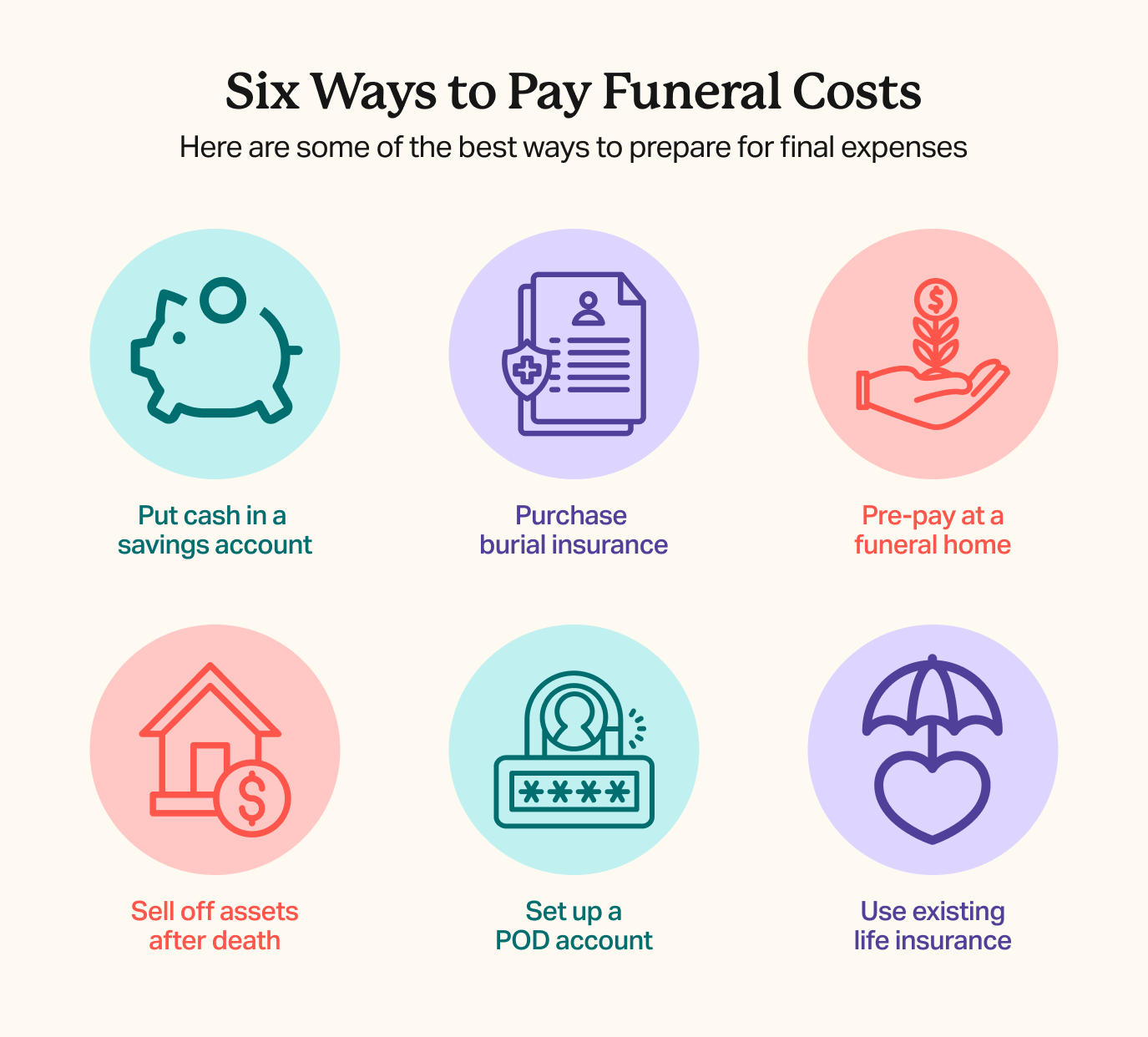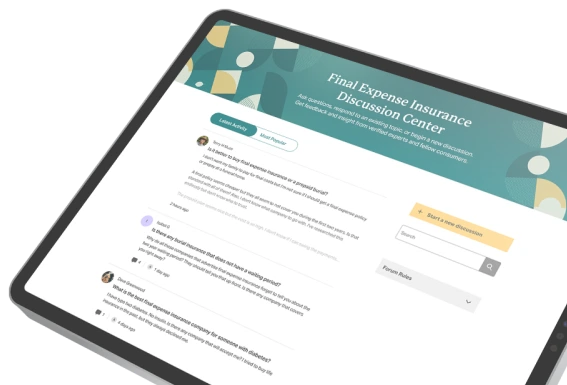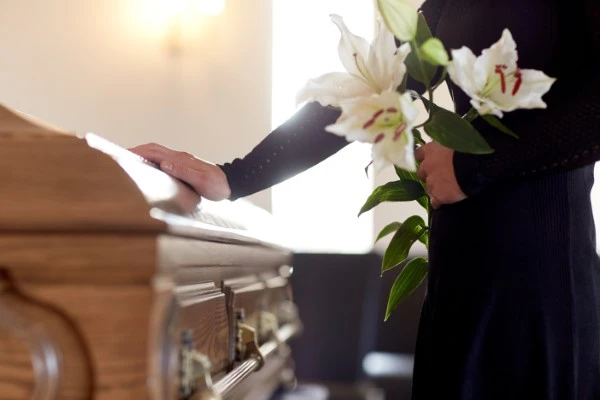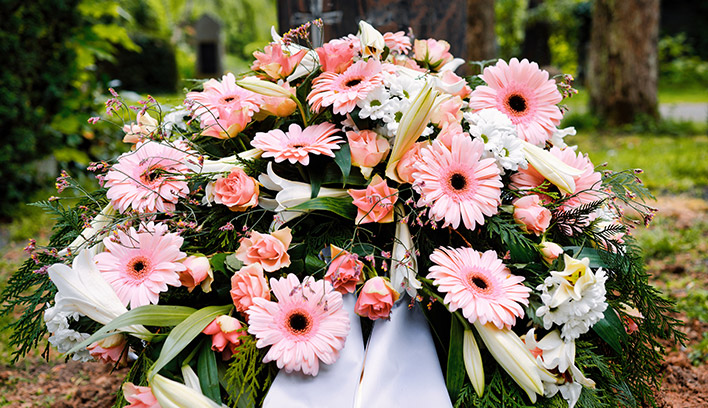Average Funeral Costs By State
| State | Burial | Cremation |
|---|---|---|
| Alabama | $7,615 | $5,858 |
| Alaska | $7,835 | $5,812 |
| Arizona | $7,390 | $5,505 |
| Arkansas | $7,912 | $5,890 |
| California | $7,835 | $5,812 |
| Colorado | $7,390 | $5,505 |
| Connecticut | $8,985 | $7,023 |
| District Of Columbia | $8,023 | $6,103 |
| Delaware | $8,023 | $6,103 |
| Florida | $8,023 | $6,103 |
| Georgia | $8,023 | $6,103 |
| Hawaii | $7,835 | $5,812 |
| Idaho | $7,390 | $5,505 |
| Illinois | $8,280 | $6,120 |
| Indiana | $8,280 | $6,120 |
| Iowa | $8,755 | $6,713 |
| Kansas | $8,755 | $6,713 |
| Kentucky | $7,615 | $5,858 |
| Louisiana | $7,912 | $5,890 |
| Maine | $8,985 | $7,023 |
| Maryland | $8,023 | $6,103 |
| Massachusetts | $8,985 | $7,023 |
| Michigan | $8,280 | $6,120 |
| Minnesota | $8,755 | $6,713 |
| Mississippi | $7,615 | $5,858 |
| Missouri | $8,755 | $6,713 |
| Montana | $7,390 | $5,505 |
| Nebraska | $8,755 | $6,713 |
| Neveda | $7,390 | $5,505 |
| New Hampshire | $8,985 | $7,023 |
| New Jersey | $8,573 | $6,498 |
| New Mexico | $7,390 | $5,505 |
| New York | $8,573 | $6,498 |
| North Carolina | $8,023 | $6,103 |
| North Dakota | $8,755 | $6,713 |
| Ohio | $8,280 | $6,120 |
| Oklahoma | $7,912 | $5,890 |
| Oregon | $7,835 | $5,812 |
| Pennsylvania | $8,573 | $6,498 |
| Rhode Island | $8,985 | $7,023 |
| South Carolina | $8,023 | $6,103 |
| South Dakota | $8,755 | $6,713 |
| Tennessee | $7,615 | $5,858 |
| Texas | $7,912 | $5,890 |
| Utah | $7,390 | $5,505 |
| Vermont | $8,985 | $7,023 |
| Virginia | $8,023 | $6,103 |
| Washington | $7,835 | $5,812 |
| West Virginia | $8,023 | $6,103 |
| Wisconsin | $8,280 | $6,120 |
| Wyoming | $7,390 | $5,505 |
| Source: 2023 NFDA General Price List Study | ||
Direct Funeral Costs
According to Funeralocity, the average cost of a direct funeral is $5,126, which is the cheapest funeral type. The national average cost of a direct cremation is $2,195.
With direct burial or cremation, the body is immediately buried or cremated with no viewing or memorial services of any kind.
Below is a state-by-state direct funeral cost breakdown.
| State | Direct Burial | Direct Cremation |
|---|---|---|
| Alabama | $5,045 | $2,035 |
| Alaska | $4,327 | $1,972 |
| Arizona | $4,397 | $1,435 |
| Arkansas | $4,466 | $1,675 |
| California | $4,677 | $1,619 |
| Colorado | $4,827 | $1,692 |
| Connecticut | $6,054 | $3,127 |
| District Of Columbia | $5,469 | $2,206 |
| Delaware | $5,657 | $2,616 |
| Florida | $5,200 | $1,691 |
| Georgia | $5,137 | $1,936 |
| Hawaii | $4,600 | $1,547 |
| Idaho | $4,625 | $1,711 |
| Illinois | $5,299 | $2,561 |
| Indiana | $5,210 | $2,293 |
| Iowa | $5,816 | $2,993 |
| Kansas | $5,374 | $2,546 |
| Kentucky | $4,804 | $2,021 |
| Louisiana | $5,206 | $2,311 |
| Maine | $5,464 | $2,362 |
| Maryland | $5,692 | $2,418 |
| Massachusetts | $5,540 | $2,708 |
| Michigan | $5,003 | $2,260 |
| Minnesota | $5,870 | $2,919 |
| Mississippi | $5,006 | $1,989 |
| Missouri | $4,990 | $1,853 |
| Montana | $5,092 | $2,476 |
| Nebraska | $5,473 | $2,960 |
| Neveda | $4,957 | $1,446 |
| New Hampshire | $5,339 | $2,190 |
| New Jersey | $5,401 | $2,511 |
| New Mexico | $4,757 | $1,935 |
| New York | $4,999 | $2,392 |
| North Carolina | $4,842 | $1,934 |
| North Dakota | $5,458 | $3,183 |
| Ohio | $4,941 | $2,050 |
| Oklahoma | $4,916 | $2,156 |
| Oregon | $4,397 | $1,283 |
| Pennsylvania | $5,283 | $2,458 |
| Rhode Island | $5,243 | $2,619 |
| South Carolina | $4,910 | $1,929 |
| South Dakota | $5,164 | $2,826 |
| Tennessee | $4,762 | $1,936 |
| Texas | $5,204 | $2,117 |
| Utah | $4,655 | $1,625 |
| Vermont | $5,035 | $2,297 |
| Virginia | $5,170 | $2,508 |
| Washington | $4,592 | $1,496 |
| West Virginia | $4,902 | $2,289 |
| Wisconsin | $5,565 | $2,898 |
| Wyoming | $5,082 | $2,550 |
| Source: Funeralocity | ||
Funeral Cost Calculator
Expense Items
Cost Breakdown
Cost Projections
Based on Inflation
Breakdown Of Funeral Costs
| Item | Cost |
|---|---|
| Basic services fee | $2,495 |
| Transfer of body to funeral home | $395 |
| Embalming | $845 |
| Other preparation of body | $295 |
| Use of facilities & staff for viewing | $475 |
| Use of facilities & staff for ceremony | $550 |
| Hearse | $375 |
| Service car or van | $175 |
| Basic memorial printed package | $195 |
| Metal burial cost | $2,500 |
| Median cost of a funeral with viewing and burial | $8,300 |
| Vault | $1,695 |
| Total burial cost with vault | $9,995 |
| Cremation fee | $400 |
| Alternative cremation container | $160 |
| Urn | $295 |
| Median cost of a funeral with viewing and cremation | $6,280 |
Other Possible Expenses To Consider
Depending on your preferences, you may need to account for the following expenses adding to the total cost:
- Cemetery plots ($3,581 on average) — Plot costs vary wildly depending on your region of the country. Also, the specifics of the cemetery, its location, and its size all influence the cost of a burial plot. For example, some plots in Alaska cost as little as $775, while in California, they might run you over $7,000.
- Grave markers and headstones ($2,000 average cost) — A reasonable expectation for headstone costs is $500 to $3,000. Plain, flat grave markers usually cost hundreds of dollars rather than thousands. However, custom upright monuments or statues can cost more than $10,000, depending on the project’s complexity.
- Flowers ($50 to $80 per arrangement) — These are typical costs, but special flower arrangements could cost several hundred dollars.
- White doves ($150-$600) — Some families like to opt for the release of white doves as a symbolic way to acknowledge the departed’s transition to another life.
- Mausoleum — A mausoleum is a large, free-standing building that houses the body. Some people refer to mausoleums as “burials above ground.” These can be very expensive, often costing about $4,000-$5,000 for a basic one.
- Grave liner ($900-$7000) — A grave liner supports the soil to protect the casket. Some cemeteries make these mandatory.
- Interment fee ($300-$1,500) — The cost of the opening and closing of the grave.
Cost Of Burial Vs. Cremation
According to the NFDA, 60.5% of consumers are expected to opt for cremation, and 34.5% are projected to choose a burial service. By 2045, the NFDA expects the cremation rate to top 80%.
Consumers opting for cremation services at a higher rate is likely due to their lower cost.
The average cremation costs $6,280, whereas the average cost of a funeral with a burial is $9,995.
Remember that you can substantially lower these costs if you opt for a direct funeral, which is when you either bury or cremate the body with no memorial services of any kind. Similarly, green burials cost substantially less than traditional funerals, which is another option to save money.
The Funeral Rule- Know Your Rights
In 1984, the Federal Trade Commission established “The Funeral Rule.”
This law grants you the following rights when dealing with a funeral provider:
- Buy only what you select rather than having to accept the packages they offer you.
- Obtain price information over the phone.
- See a General Price List (GPL) that outlines the cost of all the various services and products the funeral home offers.
- See casket prices before physically seeing them.
- See a burial container (vault) price list if it’s not included in the GPL.
- Receive an itemized price list of your selections prior to paying.
- Get an explanation that describes any requirement imposed by a cemetery or crematory.
- You can use alternate containers (other than caskets) for cremation.
- You can buy a casket or urn from third parties.
- Embalming is not required.
The FTC created the funeral rule to ensure predatory providers don’t take advantage of grieving families.
Be sure to remember these rights if you find yourself making funeral arrangements.
Tips For Saving On Funeral Costs
Here are some practical ways you can significantly reduce funeral expenses:
- Ask for the general price list — All funeral homes must show you a General Price List upon request. Funeral homes are required to honor the funeral pricing shown on their general price list regardless of what they state verbally. Every price list will have a separate line entry for each item. It is your right to purchase only the services and goods you want.
- Shop around — Call four to seven funeral homes to get estimates on the services that interest you. Funeral homes are compelled (via the FTC’s Funeral Rule) to give you prices over the telephone.
- Keep your budget a secret — Don’t tell the funeral homes how much money you can spend. If they ask you about your budget, simply say, “I’m not sure, but it won’t be much. What’s the best you can do?”
- Consider buying a casket/urn separately — You aren’t required to purchase a casket, urn, prayer cards, obituary notices, or flowers directly from the funeral home. The funeral home typically up-charges all those items, and alternatives can be much cheaper. For example, Costco sells caskets and urns.
- Don’t insist on a viewing — Embalming and body preparation are often not required unless the body is not buried within a specific time. If the funeral needs to be delayed, refrigeration is usually an acceptable storage option instead of embalming.
- Consider a direct cremation/burial — With direct cremation, the cremation process is executed immediately without a funeral ceremony of any kind. Similarly, direct burials are burials without a service or funeral ceremony. Either option will reduce the cost by thousands of dollars.
- Have the memorial at home — You can opt to have the wake (viewing) at a private residence. That will alleviate basic services fees funeral homes charge for hosting the viewing at their facility. You also won’t have to pay for a service car to transport funeral attendees. However, you’ll still have to pay for a hearse to transport the body of the deceased.
- Consider an eco-friendly green burial — A green burial (aka “natural burial) is the internment of the body in such a way that decomposition is not inhibited. The goal is for the body to be naturally recycled. There is no embalming, burial vault, liners, or anything else that is not fully biodegradable. The cost of a green burial is much less than a traditional one. While a typical burial can cost upwards of $10,000, green burials can cost as little as $2,000.
- Hold a graveside service – Conduct the memorial service at the graveside instead of paying an additional cost to the funeral home to host the service in their facility.
A funeral cost calculator can be very helpful to create a baseline and budget. You can also print this official FTC checklist for funeral expenses and use it as you price shop or compare your options.
If a funeral home includes a fee not listed on the official FTC checklist, never be shy to ask what it is and why it’s there.
How To Pay For A Funeral
Proper funeral planning can help alleviate the massive financial burden for surviving loved ones who face these unexpected expenses.
Here are some of the best ways to prepare for final expenses:
- Put cash in a savings account — Put cash aside specifically to cover end-of-life costs. It’s vital that this money is never used for emergencies or any other life event. If you use it, it won’t be there to pay your funeral costs. Also, make sure the deceased is not the only person named as the account holder where the funds are being held. That would subject the funds to the probate.
- Get burial insurance — Purchase burial insurance (aka “final expense insurance” or “funeral insurance”) specifically to cover final expenses. These small face-value whole life insurance policies are explicitly designed to cover funeral costs. Final expense insurance premiums are affordable and are available for seniors, even those with pre-existing health issues. Some life insurance companies offer these plans with guaranteed approval, meaning your eligibility is assured regardless of prior health issues. It’s best to speak with an insurance agent who can evaluate all your insurance options and recommend the best burial policy.
- Pre-pay at a funeral home — A pre-paid funeral is a contract set up directly at a funeral home. It outlines all of your funeral preferences, including the net cost. The contract usually includes a “pre-need” policy as a funeral funding mechanism. It’s essentially a life insurance policy where the funeral home is the policy’s beneficiary. With a pre-paid plan, you cannot name your own beneficiaries. You can opt to pay the total cost of the contract in one lump sum. They’ll allow you to make payments if you don’t have the cash on hand to pay it outright. The installment periods are generally 1, 3, 5, or 10 years. Like paying off a financial loan over time, your total payments will surely exceed the total cost of the funeral if you opt to make monthly payments. Pre-paid funerals are a great way to document and pay for your final wishes if you can afford it.
- Sell off assets after death — Liquidate assets to acquire the funds to pay off the funeral bills. This option really should be a last resort because assets (property, 401(k), investments) must go through the probate process before they are accessible. For that reason, there will be a substantial amount of time between the date of death and when you’ll have the cash in hand to pay for the funeral. However, if all other options are unavailable, this might very well be the only way to pay off the final expenses.
- Set up a POD account — POD stands for “payable on demand account” (aka “Totten Trust”). It’s a unique type of bank account where the funds will automatically transfer to your chosen beneficiaries after you die. You can put your funeral funds in this account as a burial allowance. Then, when you die, your beneficiaries can access the money to pay for your funeral.
- Use existing life insurance — Every type of life insurance (term life insurance, whole, universal & final expense) pays out a tax-free cash death benefit to whomever you name as the beneficiary. The life insurance payout can be spent on anything, including burial costs. You’ll need a death certificate to file a claim.
The key is to think ahead about how much your funeral will cost. Get specific in your will about your wishes, and create a plan to pay for it. Then, make sure your family knows about your plans ahead of time.
Getting Financial Assistance If You Cannot Afford A Funeral
If you’re struggling with funeral expenses, you’re not alone.
Many grieving families get hit with a substantial financial burden after a loved one passes away. Thankfully, qualifying families can often get financial help from:
- State and local funding — Some state and local governments offer assistance to low-income residents who cannot afford a funeral. For example, Nevada County in California will pay for a low-cost direct cremation for qualifying residents. Every locality is different, so check what’s available in your state or local jurisdiction.
- Medicaid — Low-income families are often eligible for assistance from state-run Medicaid funeral assistance programs. Since individual states operate their own programs, you’ll need to see what’s available in your resident state. For instance, Michigan’s Medicaid program provides $475 for funeral services, $145 for a cemetery, and $100 to offset the vault cost. Rhode Island, similarly, pays up to $900 for funeral expenses via its Medicaid program.
- Department of Veterans Affairs — If your loved one was a veteran, you should be eligible for VA benefits. The current maximum VA burial allowance is $2,000.
- Social Security — Surviving spouses or eligible children can receive a one-time death payment of $255. Depending on your situation, you may qualify for survivor benefits from the Social Security Administration.
- National Association of Crime Victim Compensation Boards — Certain states offer financial assistance for funeral expenses to family members of a loved one who died from a violent crime. Check your state for more details.
Frequently Asked Questions
In most cases, funeral costs are not tax deductible for individuals. However, the IRS allows some expenses to be claimed as a deduction on estate tax returns.
In most cases, the least expensive funeral option is a direct cremation, which typically costs $1,924, according to Funeralocity.com. You avoid the costs of funeral home services, a casket, a vault, and cemetery fees. You’ll likely save thousands this way, but it can be a difficult choice because most families want a service to honor their loved ones.
A casket is the most expensive part of a funeral. Depending on the material of the casket, they can cost $900-$10,000. Keep in mind that metal caskets tend to cost more than wood ones.
Direct cremation is the least expensive option for most families. Your state may offer funds to offset end-of-life expenses if your family qualifies for Medicaid. You may also be eligible for assistance from FEMA, the VA, Social Security, or other state and local programs.
Choice Mutual often cites third-party websites to provide context and verification for specific claims made in our work. We only link to authoritative websites that provide accurate information. You can learn more about our editorial standards, which guide our mission of delivering factual and impartial content.
- NFDA. https://nfda.org/news/media-center/nfda-news-releases/id/8134/2023-nfda-general-price-list-study-shows-inflation-increasing-faster-than-the-cost-of-a-funeral
- Funeralocity. https://www.funeralocity.com/average-funeral-price
- NFDA. https://nfda.org/news/media-center/nfda-news-releases/id/8134/2023-nfda-general-price-list-study-shows-inflation-increasing-faster-than-the-cost-of-a-funeral
- Funeralocity. https://www.funeralocity.com/average-funeral-price
- direct burial. https://www.everplans.com/articles/4-things-you-need-to-know-about-direct-burial
- on average. https://www.perfectgoodbyes.com/average-cost-of-burial-plots/
- headstone costs. https://funeralcircle.com/headstone-cost/
- per arrangement. https://www.us-funerals.com/funeral-flowers/#expensive
- white doves. https://www.releasewhitedoves.com/dove-release-packages-prices/
- mausoleum. https://www.dignitymemorial.com/costs/mausoleum
- grave liner. https://www.everplans.com/articles/how-to-choose-the-right-outer-burial-container-burial-vaults-and-grave-liners
- opening and closing. https://www.dignitymemorial.com/pre-planning/funeral-costs/opening-and-closing-fees
- NFDA. https://nfda.org/news/statistics
- NFDA expects. https://nfda.org/news/media-center/nfda-news-releases/id/7717/us-cremation-rate-expected-to-top-80-by-2045
- The Funeral Rule. https://consumer.ftc.gov/articles/ftc-funeral-rule
- General Price List. https://www.ftc.gov/business-guidance/resources/complying-funeral-rule#the-general-price-list
- green burial. https://www.greenburialcouncil.org/greenburialdefined.html
- official FTC checklist. https://www.consumer.ftc.gov/articles/0301-funeral-costs-and-pricing-checklist#Funeral_Pricing
- payable on demand account. https://www.nolo.com/legal-encyclopedia/free-books/avoid-probate-book/chapter1-1.html
- Nevada County in California. https://www.nevadacountyca.gov/225/Low-Income-Assistance-Cremation-Program
- Michigan’s Medicaid program. https://www.joincake.com/blog/medicaid-funeral-assistance-benefits/
- VA burial allowance. https://www.va.gov/burials-memorials/veterans-burial-allowance/
- one-time death payment. https://www.ssa.gov/benefits/survivors/ifyou.html
- survivor benefits. https://www.ssa.gov/benefits/survivors/
- your state. https://nacvcb.org/state-information/
- Funeralocity.com. https://www.funeralocity.com/blog/what-is-direct-cremation-and-how-much-does-it-cost/







